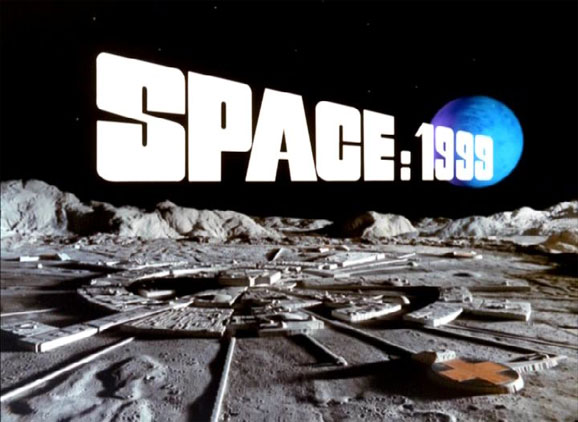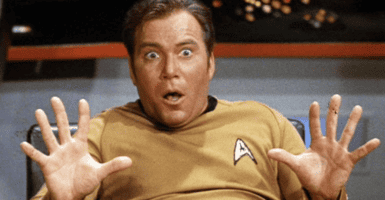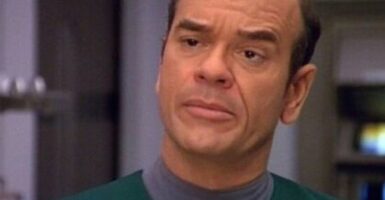Space: 1999 Is The World We Should Be Living Now In Futures Past
This week my obsession with the way we used to see the future takes me to Earth's moon.
This article is more than 2 years old
This week my obsession with the way we used to see the future takes me to Earth’s moon, hurtling out of orbit in Space: 1999. Blast off with the latest installment in GFR’s ongoing series, Futures Past, right now.
Six years after Apollo 11’s historic 1969 landing on the moon it seemed as though man was taking the first step to something bigger and grander. By comparison to some of the other science fiction being produced in the time period, Gerry Anderson’s (Thunderbirds, UFO) British produced television series Space: 1999 actually took a fairly conservative approach to what man might accomplish in the depths of space. Yet even Gerry’s view, realistic though it strove to be, turned out to be far too optimistic.
Still, in 1975 it seemed entirely plausible that man would have a permanent base on the lunar surface within the next 25 years. So Anderson set out to make a show based in what, at least then, seemed like an inevitable future.
Here’s Martin Landau in the very first episode of Space: 1999, which was believe it or not, at the time the most expensive television program ever made. Watch it and I’ll see you afterward to discuss how they did at predicting the future…
The truth is that, aside from all the sleeve zippers, this is the world we should be living in right now. Establishing a base on the lunar surface, maybe even a base just like Moonbase Alpha, would have been completely plausible by 1999 had NASA continued to receive the kind of funding it deserved. Instead, after Apollo 11 America’s interest in exploring the cosmos waned and so did our government’s willingness to spend money on it.
Part of the problem, as it turns out, is that there just isn’t any profit in it. The moon’s a barren wilderness and we’ve yet to find anything worth going through all the trouble to go up there and get. Space: 1999 tries to clear this obstacle by presenting the moon as a reasonable solution to the world’s waste storage problem. That might have made sense if the cost of launching material into space had ever reached manageable levels. Unfortunately since money was never spent to develop a cheaper way of getting to the moon the cost to launch anything, let alone waste, remains prohibitively high.
Space: 1999 stayed on the air for two seasons and 48 episodes. At the time critics praised it, though as you’d expect scientists and science fiction authors alike were a little less than enthused with the whole “launching the moon out of orbit with a nuclear reaction” premise. Even then, that didn’t make a lot of sense. Yet so much of the rest of the show feels well thought out, right down to the G-forces when the moon’s blasted out of orbit, it’s easy to forgive them that one big piece of ridiculousness.
In an era where most science fiction predicted a future that was largely a wild fantasy, like the stuff of Battlestar Galactica or Buck Rodgers, Anderson’s series deserves praise for almost getting it right. Actually, I submit that he did get it right. Space: 1999 is the world we should be living in, we’re the ones who got it wrong.













